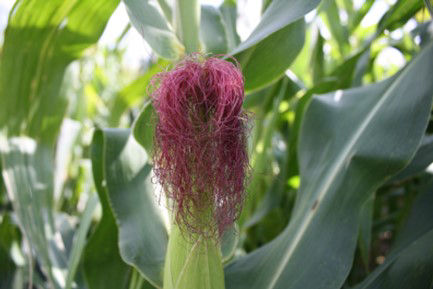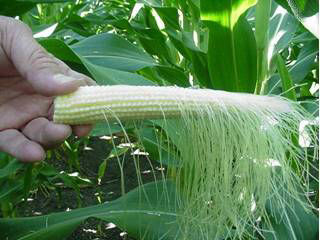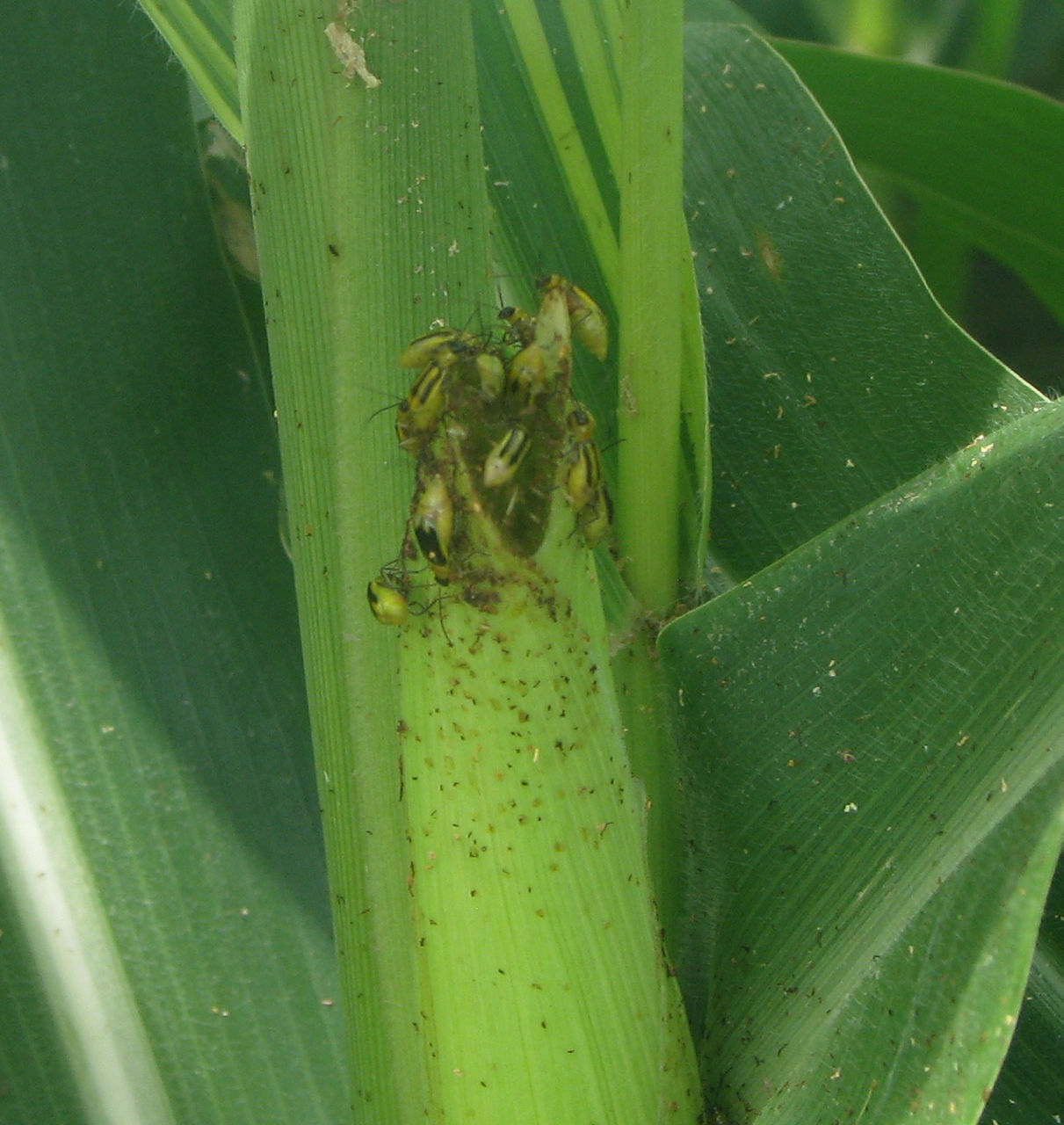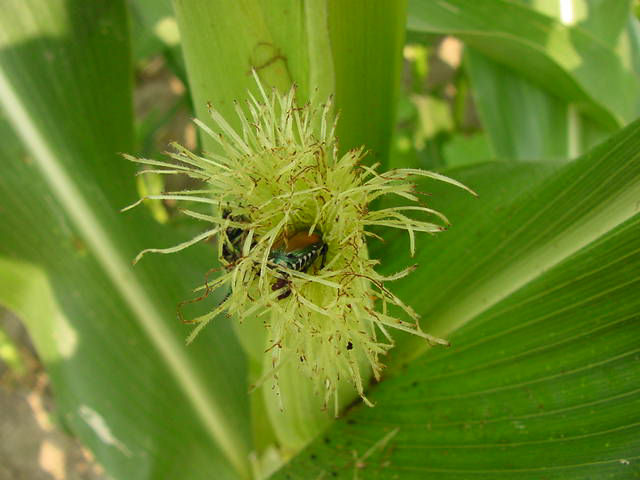Corn Silking
June 3, 2024
Fun facts about corn silk:
- The corn plant produces up to 1000 silks per ear.1,2
- Silk colors can range from white to pink to purple (Figures 1, 2, and 3).

Silk growth starts around V12 growth stage at the ovules (potential kernels) at the butt of the cob and proceeds to the tip. It takes about 10 to 14 days for the silks to emerge out of the husk. R1 growth stage begins when a single silk strand is visible. Under favorable growing conditions, the silks continue to grow up to ten days after emergence at which time they start senescing. The silks are receptive to pollen up to senescence; however, most are fertilized within 4 to 5 days under normal conditions.1,2 After and ovule is fertilized, the silk detaches from the ovule (Figure 2). When moisture is plentiful and there is a delay in available pollen, silks may continue to grow and be unusually long (Figure 3).


If there are issues with pollination, there are a few causes:
Drought and heat stress: Silks are more susceptible to growing condition stress since they have the highest water content of any plant part. Under normal conditions silks can grow 1.5 inches a day, but drought stress can slow their growth which can delay silk emergence. Under heat stress, the silks can dry out and make them less receptive to pollen. Heat stress can also speed up pollen shed which can reduce the pollination window or nick creating a situation where silks have not emerged, but pollen is available. This can result in poor embryo fertilization and kernel set.2
Silk clipping from insects: Rootworm beetles (Figure 4) and Japanese beetles (Figure 5) can cause severe silk clipping. Scout field and if the silks are clipped at ½ inch in that field and beetles are present, consider spraying with an insecticide.2


Silk balling: Silk balling can occur when the silks don’t grow straight to the ear tip but start twisting or balling in the husk causing them not to emerge. It can be caused by genetics or environmental conditions.2
Channel Agronomist
Nathan Falk
Sources
1Nielsen, R.L. 2020. Silk development and emergence in corn. Corny News Network. Purdue University. https://www.agry.purdue.edu/ext/corn/news/timeless/silks.html
2Anonymous. 2017. The corn pollination process. OSU Extension. (Wayne County) CFAES. The Ohio State University. https://wayne.osu.edu/news/corn-pollination-process
Websites verified 4/29/24. 1110_392051